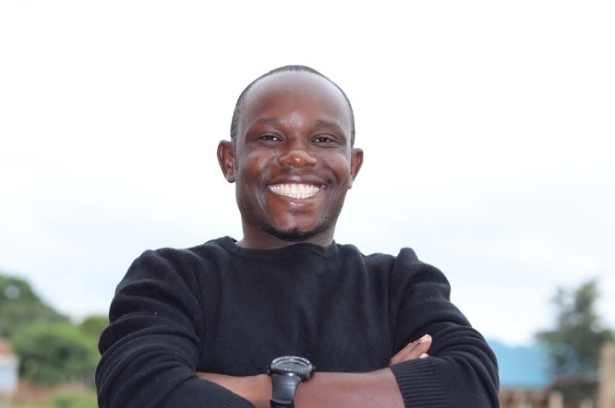Why is Tilenga’s Central Processing Facility in Buliisa without a human buffer zone?
These are human health contaminants with fatal effects on physical, social, and spiritual levels for generations.

Op-Ed: In 2008, when Tullow Oil Uganda first flared the Kasemene 1 oil well located in my home village of Kakindo, I was an adult boy going to Bugungu Secondary School. The shortcut to our school was a few meters from the fence of the oil well.
I remember one evening, and it was a Friday. As we walked back home, people had gathered at our village borehole tree. A dark-skinned, slightly taller woman from the government had come with Tullow Oil officials to tell us that the oil at Kasemene 1 would be burned at anytime to test it.
She told us that the government had decided all people in the radius of 1 kilometer squared would be compensated and temporarily moved out of the area for six days in order to save them from potential life pollutants like noise, heat, light, smoke, and spills.
Days later,our village chairperson started to move around the village, with officials from Tullow Oil Uganda registering the people who were to be compensated. They would register the number of houses, people, goats, cattle, chickens, and other living things.
But to our shock, only people in the radius of 300 meters were registered. Not the initial 1 kilometer squared that had been communicated. When the time for flaring came, these people were paid in advance to move out of their homes.
The flaring took place for 10 days instead of the six days that had been communicated and compensated. The people who had moved to lodges with their goats, chickens, cows, and others were left stranded upon learning that the days had increased without more additional payments.
For those of us whose homes were not within a radius of 300 meters, it was a horror. The nights were long. The heat inside the houses was unbearable, and the noise outside was so scary. Our livestock ran away from home, and every evening, we would gather in one home and sleep outside, watching over the night. After the flaring, there was a meeting organized by Tullow oil officials at the usual borehole tree.
My uncle, Mr. Isaac Bitamale, whose home was located about 500 meters from the oil well, was very bitter with one of the Tullow oil officials, whose name I cannot recall very well. He was a white man and most probably an expatriate. Everything they had said would be controlled had turned out to be a lie.
When Mr. Bitamale voiced concerns about the too much light that killed our eyes, the expatriate arrogantly asked why he had to look in the direction of the light to kill his eyes. About the noise, he said that the village radio cassettes that kept youths happy in the night had more dangerous noise than the sound of burning fire. And for the smoke, he was very direct, saying that our tadooba’s produced more dangerous smoke than the smoke from the burning oil.
There was chaos as the villagers wanted to beat him. We were told later that he was deported after the sad encounter. 16 years later, my mother cannot drink the rainwater she grew up enjoying. The water we harvested became darker and more solid during and after the flaring to date.
Well, if during the first flaring at Kasemene 1 well pad, Tullow moved people from the area around the well pad and created a safety buffer zone of 300 square meters from the fence of the well pad, how come TotalEnergies Uganda (TEPU) has no clear buffer zone for the central processing facility, which will emit 13 kilograms of carbon dioxide per barrel of oil? The CPF will produce 190,000 barrels of crude oil per day at its peak.
That is 2,470,000 kilograms of carbon dioxide (2,470 metric tons) each day. And for a year, 910,550 metric tons. A minimum of 25 years of extraction is 23 million metric tons of carbon. A community in close proximity to such a facility will experience life disruption from the gases and other pollutants, like noise.
These are human health contaminants with fatal effects on physical, social, and spiritual levels for generations. Buffer zones are intended to provide protection of health core functions and provide transitions towards increasing disturbances of development.
The Tilenga’s Environmental Social Impact Report draft, which was shared by the National Environmental Management Authority (NEMA) with local authorities and civil society organizations for review in 2018, indicated that a 15-kilometer buffer zone for the multiple emissions to the air at the CPF had been considered to account for ecological receptors at this distance in line with UK guidance.
To the dismay of us all, at a public hearing on 12/9/2018, an Indigenous CSO called Bagungu Community Association on behalf of the indigenous community presented this issue, pointing to its lack of clarity on whether the 15-kilometer buffer zone around the CPF involved relocating the local residents. Officials from TotalEnergiesUganda (TEPU) responded that it had been a mistake and that they actually meant 1.5 kilometers.
A visit to the CPF area in Kasinyi today will help you agree with me that even the 1.5-kilometer buffer zone, in real sense, actually doesn’t exist. Human homes are located a few meters from the fence of the CPF. Is this a conspiracy between Total Energies and the government of Uganda to evacuate the indigenous community around the CPF voluntarily in the future?
The author is Nelson Byaruhanga, an indigenous journalist, writer, and filmmaker.
Disclaimer: As UG Reports Media LTD, we welcome any opinion from anyone if it’s constructive for the development of Uganda. All the expressions and opinions in this write-up are not those of UG Reports Media Ltd. but of the author of the article.
Would you like to share your opinion with us? Please send it to this email: theugreports@gmail.com or WhatsApp us at +256757022363.






